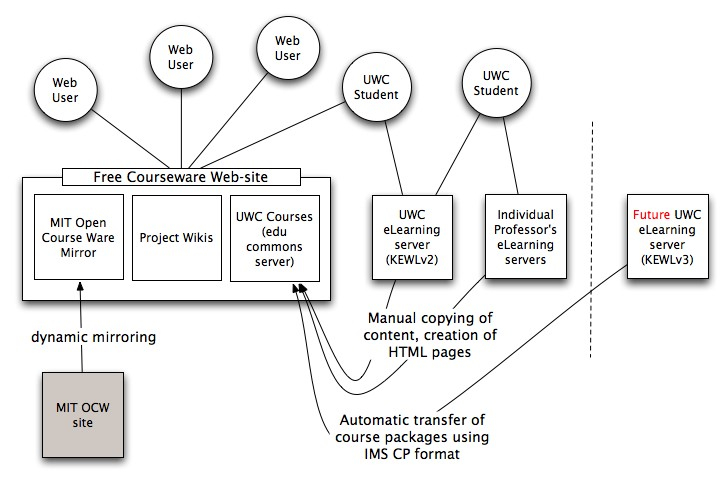Choosing the right solution for your needs
Technology is not the most important aspect of an OER project, but choosing the right solution can make work easier and more efficient. The best solution is often the one that provides the features and levels of reliability you need. However, no technology is perfect; there will always be some problems and missing features.
The technology infrastructure needed to support an OER project includes hardware and software, as well as IT services such as backup, administration, troubleshooting, installation and support.
Technology analysis
The first step in designing a technology solution is to conduct a technical analysis of the institution's current hardware, software and network environments. It is also important to consider the infrastructure needed to meet the project goals. For example, many universities have a learning management system (LMS) or content management system (CMS) where faculty and staff store and archive their digital materials. An OER project should take into account these existing systems and look at how they could be expanded or complemented by specific OER technologies.
The technical analysis can be a complex process. It is beyond the scope of this workshop to cover every possible technical requirement and configuration. Ideally, there would be a software engineer on the team with experience in planning and implementing institution-wide software applications.
Fortunately, there are a number of software applications for OER projects that do not require a high level of technical expertise.
When designing the technology solution, keep in mind the following questions:
-
What is the publishing process and how does it connect to existing systems and applications?
-
Will the features provided by the standard packages be sufficient, or will a custom solution be necessary?
-
What expertise and skills exist at the institution to help with technology design and implementation?
-
What types of support are available?
-
Who is the target audience and how will they access the resources?
Before deciding on the solution, it is worth getting competent technological assistance and investigating what others are using in terms of software platforms and content standards. The example architecture diagram below was created for project planning at the University of the Western Cape:

UWC Free Courseware Project technology infrastructure
Publishing platforms/digital libraries and repositories
Most learning management systems have a way to publish content openly, although they might not support all the desired features for instructional development.
That said, if your institution has experience with a particular learning management system, it would make sense to investigate whether it could be extended to the OER project. Open source LMSs include Moodle and Sakai.
-
Some projects have extended the Moodle course management system to include features for using or publishing OER. These projects have not made their code widely available or published documentation on how to install the modifications on a standard Moodle system, but they might be willing to advise others interested in using Moodle directly.
-
Rice University's Connexions project has developed a software platform that contains a number of special features for collaborative content development. The objective was to enable users to share their materials, and extend and modify them online within the system. Connexions can also be applied as a repository, but most users register and access the server hosted at Rice (Connexions, 2009).
Commercial options
There are also commercial hosting platforms for media resources. Some are optimized for open educational resources, both courses and learning objects, with opportunities to work directly with learning management systems. Others are more generic in nature and can host digital media of any kind in a searchable database structure.
Two sources of commercial hosting platforms include:
Software system |
Company |
Information about the hosting system |
| Equella | The Learning Edge International | http://www.equella.com/ |
| Harvest Road Hive | Exact Learning Solutions | http://www.exact-learning.com/en/products/harvestroad-hive-digital-repository |
The low bandwidth challenge
Low bandwidth is a particularly serious problem in developing countries where an otherwise open educational resource may not be accessible because it consumes too much bandwidth.
Low bandwidth web design guidelines are available from Aptivate, at a UK-based NGO. The guidelines cover a number of points. One with particular relevance to OER is to provide, wherever possible, resources in multiple formats and versions, e.g. audio-only versions of videos, or transcripts of videos and audio materials.
Activity: What technologies are available to you?
Use the table below to list technical systems that may be available to you at your institution or organization for use in an OER project.
|
Technology function |
Technology available to you |
|
Publishing systems |
|
|
Digital library systems |
|
|
Course delivery or learning management systems |
|
|
Other functions |
|
References
Schmidt, J.P. (2007), Free Courseware UWC case-study, Available from http://oerwiki.iiep-unesco.org/index.php?title=OER_stories:_Free_Courseware_Project%2C_UWC
